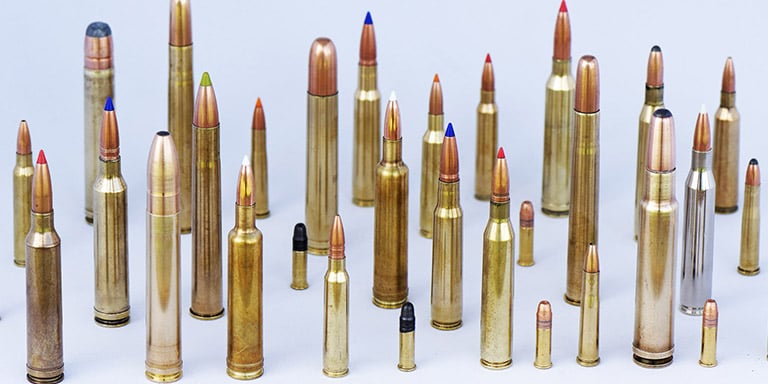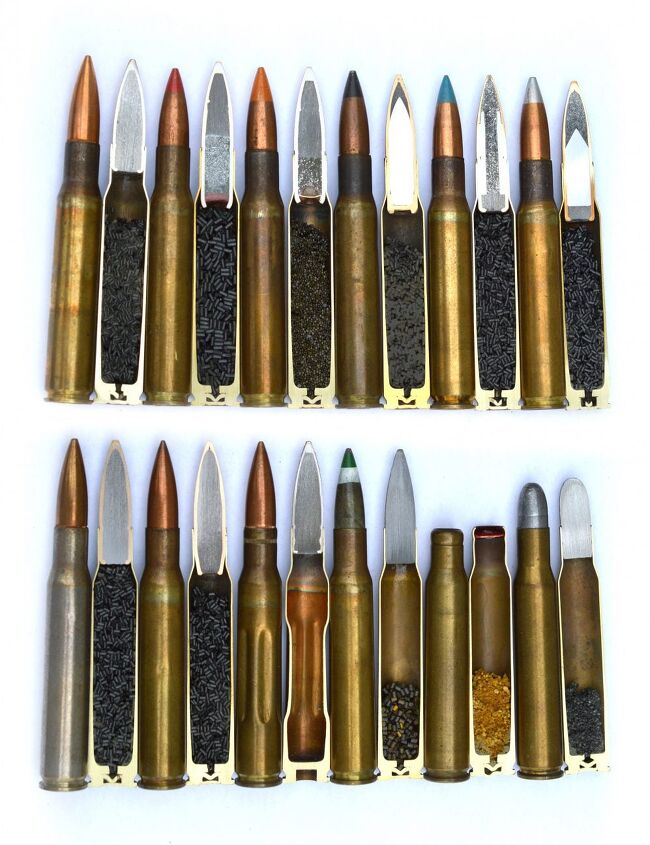Ammunition Pro Llc Fundamentals Explained
Ammunition Pro Llc Fundamentals Explained
Blog Article
Ammunition Pro Llc Things To Know Before You Buy
Table of ContentsSome Ideas on Ammunition Pro Llc You Need To KnowAmmunition Pro Llc Things To Know Before You BuyAmmunition Pro Llc - An OverviewThe 5-Minute Rule for Ammunition Pro LlcGetting The Ammunition Pro Llc To Work
The fundamental components of ammo are the exact same for rifle, pistol, and shotgun ammo. Recognizing just how ammo functions is a crucial aspect in being a responsible weapon proprietor. Today we're looking at the what the basic components of ammo are and how they collaborate to terminate a round. The basic components of ammunition revealed on a 9mm. Gun Ammo round.It houses the primer and powder. The bullet is seated outdoors end of the case. When you terminate a bullet out of a semi-auto weapon, the gun's extractor lifts the instance from the firing chamber and it flies out of the weapon. The case is also often described as coverings, brass, or casings.
A gun's firing pin strikes a cartridge's primer. The primer is a steel cup that holds an explosive chemical compound. When the shooting pin strikes the guide cap, it squashes the priming compound versus the anvil. This creates a little surge in case that sparks the propellant. The guide is located in the edge of the situation of a rimfire cartridge.
The Main Principles Of Ammunition Pro Llc
The two usual types of primers in centerfire cartridges are Berdan and Boxer guides. Gunpowder alongside the case that normally includes it. Powder, also referred to as propellant or gunpowder, is a fast-burning chemical blend. The primer explosion sparks it. It is usually a combination of saltpeter, charcoal, and sulfur.

We call the projectiles for shotshells, which we fire through shotguns, slugs and shot. A slug is one solid item, typically made out of lead. Shot is a group of pellets constructed out of lead, steel, bismuth, or tungsten alloy. Shot pellets can be available in different dimensions and amounts. Since you have a standard understanding of the basic parts of ammo, you can really feel a little bit more positive in exactly how your gun and ammunition function!.
Ammunition Pro Llc Things To Know Before You Get This
Stay on par with Special Deals, Breakthrough Notification of Sales, and Store Occasions
Fun fact: Grains are made use of to explain the mass of a bullet since all the way back in the very early days of guns, it was a dispenser's system of measurement, and a common denominator was required to figure out just how much result in make use of to make actors lead bullets (Ammo Deals). 'Grains' as a device of action for weight goes all the means back to old times, and represents the weight of a grain of wheat

(https://www.bark.com/en/us/company/ammunition-pro-llc/ON2DlM/)For recommendation, the weight of a paper clip is around 16 gr. We recognize that grains are an action of mass, and much more = larger, and heavy is great? Yes, hefty is excellent, however mass of the projectile isn't the only thing you require to take into consideration when picking a round for your firearm.
The Basic Principles Of Ammunition Pro Llc
This spin is created by grooves reduced or hammered right into the interior of the barrel, which are described as 'gunning'. Enjoyable fact, this is the beginning of the term "Rifle" ex-spouse. A rifled musket vs. smoothbore firearm. The effect this spin carries projectiles is a maintaining one the bullet rotating keeps the nose directed straight, in the exact same way that a completely spiraled football toss is mosting likely to be far more secure and exact in trip than an unsightly duck, end over end toss.
Exactly how does this associate with grain weight? Imagine you're on one of those play area carousels, the ones with bars you hold on to while it spins. Or a carnival ride where you're strapped to a board, facing inwards, which revolves really quickly. When it's rotating gradually, you do not really feel a lot, and it's very easy to hold on.
Or when it comes to the carnival adventure, you start to feel much heavier. The even more mass you have (weight), the a lot more you will feel this impact. The exact same impact occurs with bullets. The larger the projectile, the even more result a much faster spin will have on it. This is why you often tend to see slower twist rates for larger, slower projectiles, and much faster twist prices for lighter, greater speed projectiles.
Our Ammunition Pro Llc Diaries
There's an additional aspect that we have to think about when picking a grain weight for our ammunition. As hinted at above, bullet rate, or the rate of the projectile, is a major variable when figuring out the most effective grain weight projectile to make use of. Rate is affected by a few significant factors, consisting of the kind and quantity of propellant (gunpowder), barrel size, and bullet weight.

One of the most typical grain weight rounds for 9x19mm cartridges are 115gr and 124gr. These are typically lead core, fully jacketed (FMJ) rounds. Both of these grain weight cartridges will certainly do well in factory 9mm pistols, to typical gun distances (approximately 50 yards). 115 grain rounds are one of the most common (and consequently least costly).
Report this page